Artist Interviews 2021
Mark Ben Harris 
By Laura Siebold
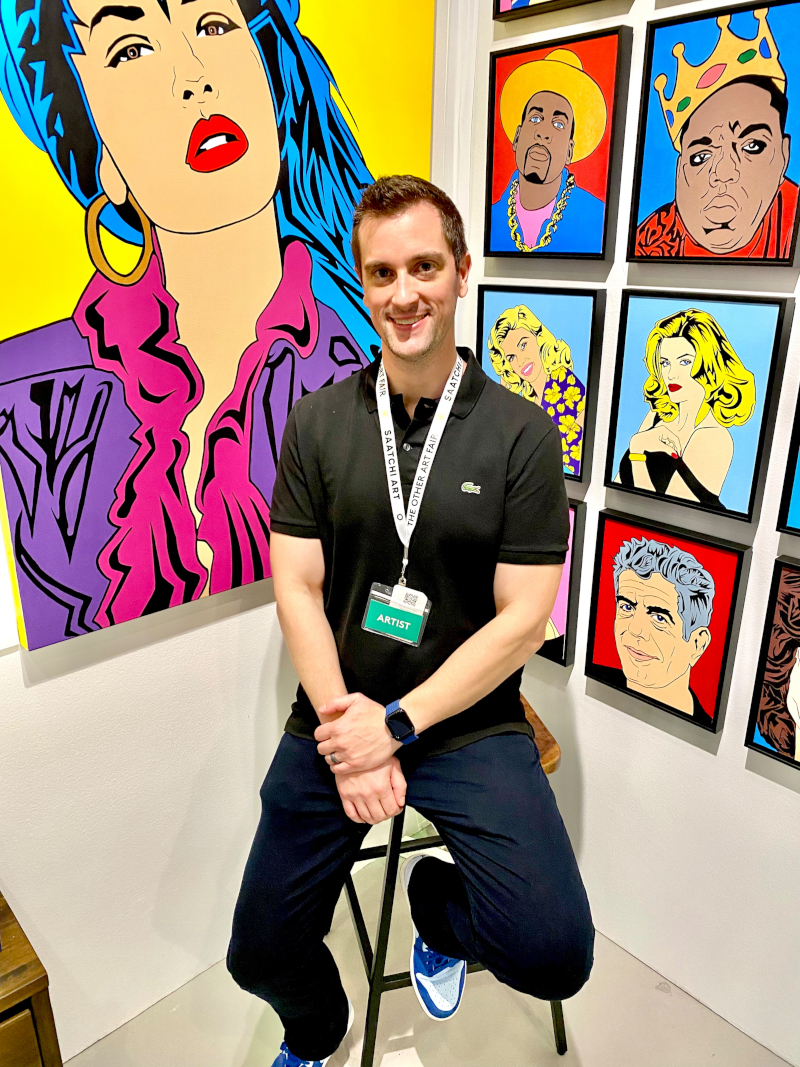
Mark Ben Harris’s artwork is colorful and expressive; it captures the viewer’s eye and is a successful reinterpretation of modern Pop Art. Driven by his fascination with digital arts and his attention to detail, the artist designs his artwork digitally before painting it on canvas.
The inspiration for his “Gone 2 Soon” series, a series that depicts iconic Pop Art icons and pays homage to the topics of loss and suffering in their lives, originated from a personal loss in Mark’s life. The artist told us about the connection between his personal history and his artistic style, the primary message of his art, and the importance of awareness of the life and death cycle. In his interview, Mark points out the unique value of art fairs and his aspirations as an artist. Mark is based in Los Angeles, California.
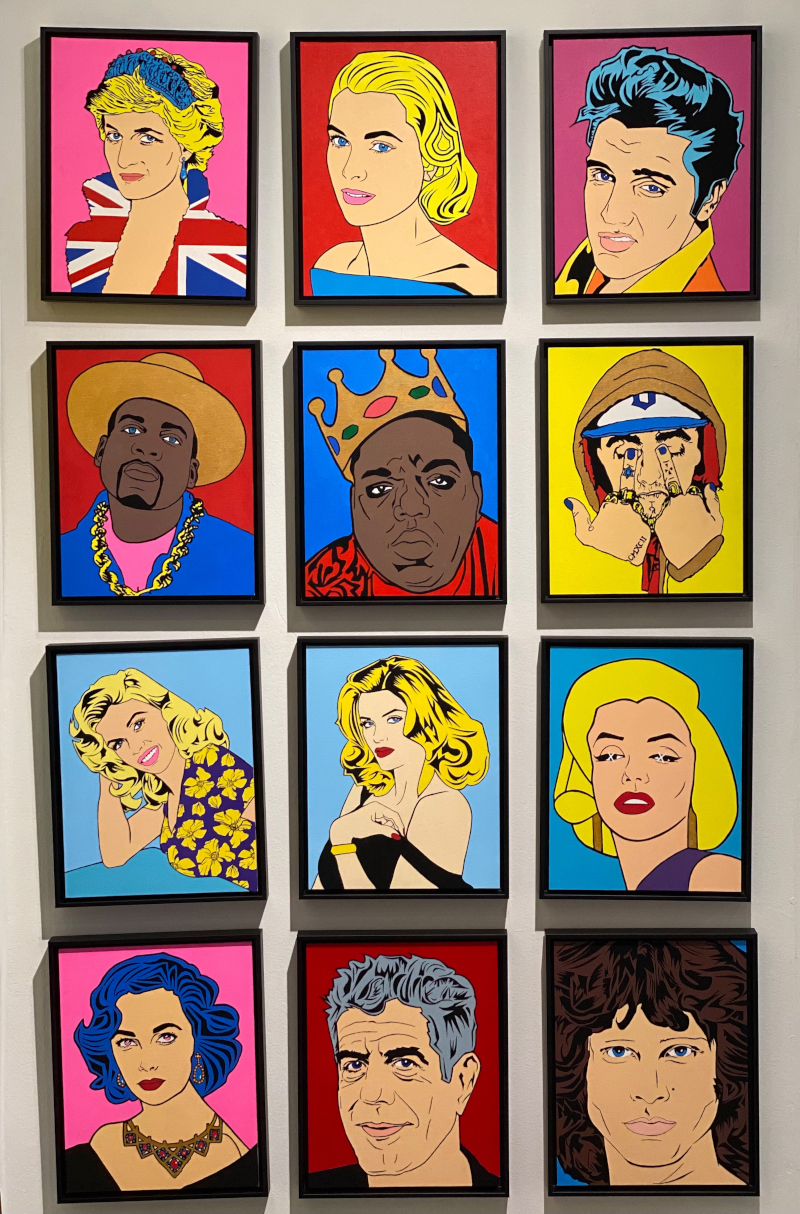
You design your art digitally before you paint by hand on canvas. How did you come up with this method?
The process to digitally design came about organically. It wasn’t until I started sketching the under-painting on the canvas that I noticed that I kept making mistakes and I wanted to have a plan in place before any paint touched the canvas. And even before any paint touches the canvas, I want to have the design perfectly sketched onto the canvas. When I have the finished digital version (which is sized to the canvas), I prepare the transfer of the design by creating a grid over the image with 8.5 x 11-inch sections over each part of the image. I then subtract all color from the digital version, so it only reveals the areas in black. Then I print each 8.5 x 11-inch section. I use my inkjet printer to print everything. Once all the sections have been printed, I proceed to put each section together, taping the back of each piece. After all the sections are taped together, I proceed to place the paper template onto the canvas, lining it up and taping it with the ink side down to the canvas. Once the template is secured to the canvas, I’ll apply pressure to the paper/canvas with the dull side of a paintbrush on the areas with ink, thereby transferring a ‘ghost image’ onto the canvas. I used to fill in the black areas with soft graphite, so it could transfer easily to the canvas, but I soon discovered that the printer ink does a great job, too. Designing the painting digitally allows me to have a certain amount of control and gives me the ability to create a product that reflects the nature of contemporary digital Pop Art. It also provides a certain challenge for me to recreate the digital image using an engineered process.
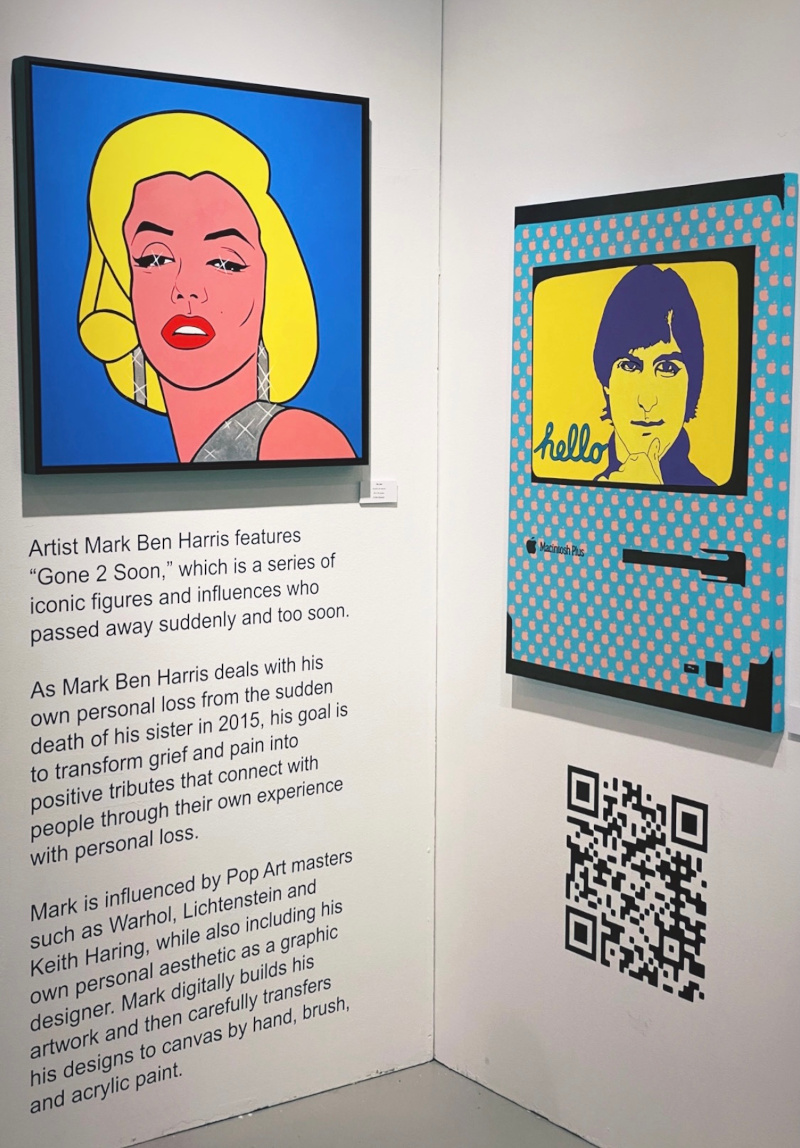
How did you get into digital arts? Have you always wanted to be an artist?
Growing up, I had a fascination with digital arts, especially when we got our first desktop computer, a Compaq Presario. This was back in 1995, so all we had were the painting programs that early Windows operating systems included. The program was cool because it was so simple to use, and it was the first time I realized that art could be made by more than just paint and pencil. It created all sorts of possibilities. However, years later I majored as a graphic designer in university and quickly figured out that I didn’t really like the major because it wasn’t what I had expected. About six years ago, I was working in sales for a tech company and part of my job was creating sales presentations using PowerPoint. I realized I had more fun designing the presentation than the selling portion. I became more familiar with Photoshop and enjoyed what I was able to accomplish. I knew as a child that I wanted to be involved in the arts and do artwork. I always felt compelled to draw and doodle, especially portraits. I read a lot of comic books growing up and I loved the possibilities that art could give me. And I soon realized that drawing gave me creative freedom. That part of me never left.
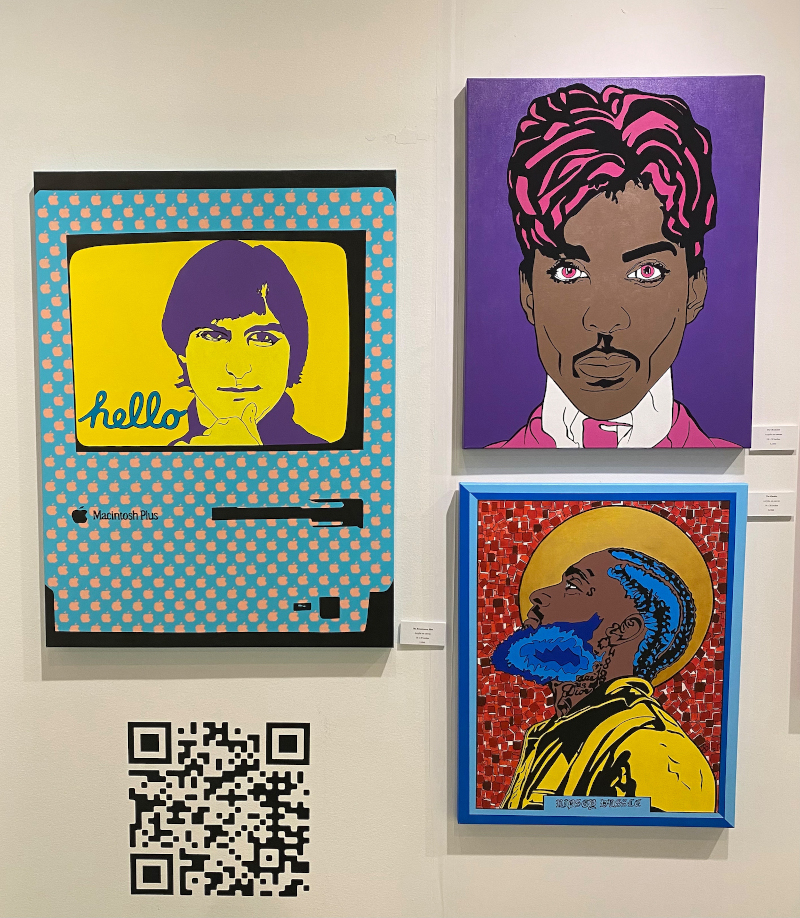
Your “Gone 2 Soon” series depicts iconic personalities on canvas. The images appear as a unique combination of pop art-images,
first brought to life through digital sketching. Do you do deep research on each character prior to designing your digital image? What is the image out of this collection you’re most proud of to this day and why?
I have a connection with each character. Some more than others. I typically do a deep dive into each person’s background and what shaped them to become their iconic self. Usually, most of these icons have gone through some tragic moment in their life that shaped them. The common thread throughout is suffering, loss and grief. I connect with these people so much because they were and still are a part of my life through their contributions to humanity. These paintings are tributes to them and to anyone who has experienced loss. Even though the artwork is predetermined through digital means, the human element still exists, as we experience the emotions of loss and suffering. That’s the connection I hope people find in my art. The image I’m most proud of is the image of Marilyn Monroe (“The Star”). This wasn’t the first painting from the series, but it was the first painting about which I fully understood what my process was going to be. And it turned out exactly how I wanted, and I knew this was going to work moving forward. I’m very proud of it, too, because it pays homage to Pop Art, and it embodies a style that I’m able to call my own.
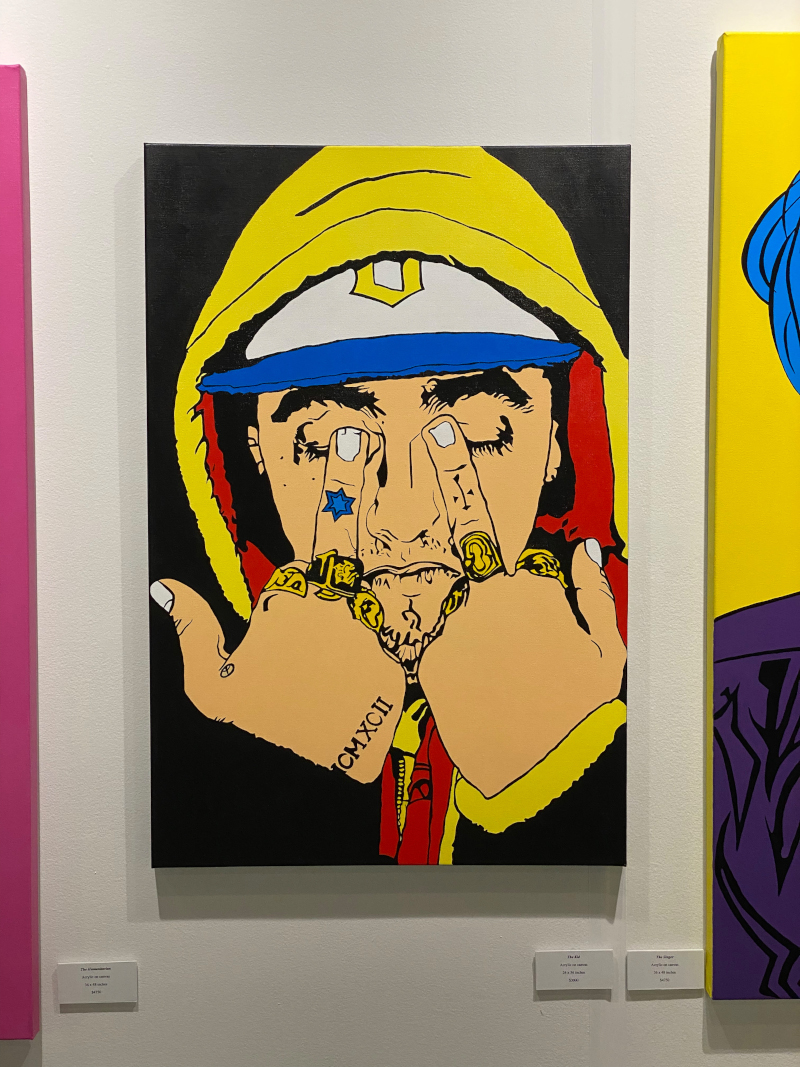
You suffered from a personal loss in your life which inspired you to start the “Gone 2 Soon” series. Has art been an outlet for healing and personal growth for you?
If I didn’t have art, I don’t know how I would’ve processed my sister’s death. The year following Rachel’s death was difficult. The grief was like a slow whiplash. You get hit with the loss so suddenly, and you don’t know what the damage looks like until much later. Something like that rewires your brain. My personal relationships and perspective about life changed the most. I was so sick with grief that I ended up being hospitalized while visiting my parents in Michigan during the one-year anniversary of Rachel’s passing. The time in the hospital gave me the opportunity to stop and process everything. I had no choice. While I was in the hospital, I decided I needed to start creating art again. I hadn’t done any meaningful art for a few years because I was finishing my Bachelor’s degree and was working full-time. Art allowed me to process the grief head-on. I realized that I was able to turn the negative feelings and pain into something that could connect with others. Painting gave me the outlet I needed to process the pain, and also to heal. And in the end, I realize that I have grown so much since that moment in the hospital. I’ve learned to be more patient and understanding. And most importantly, more forgiving.
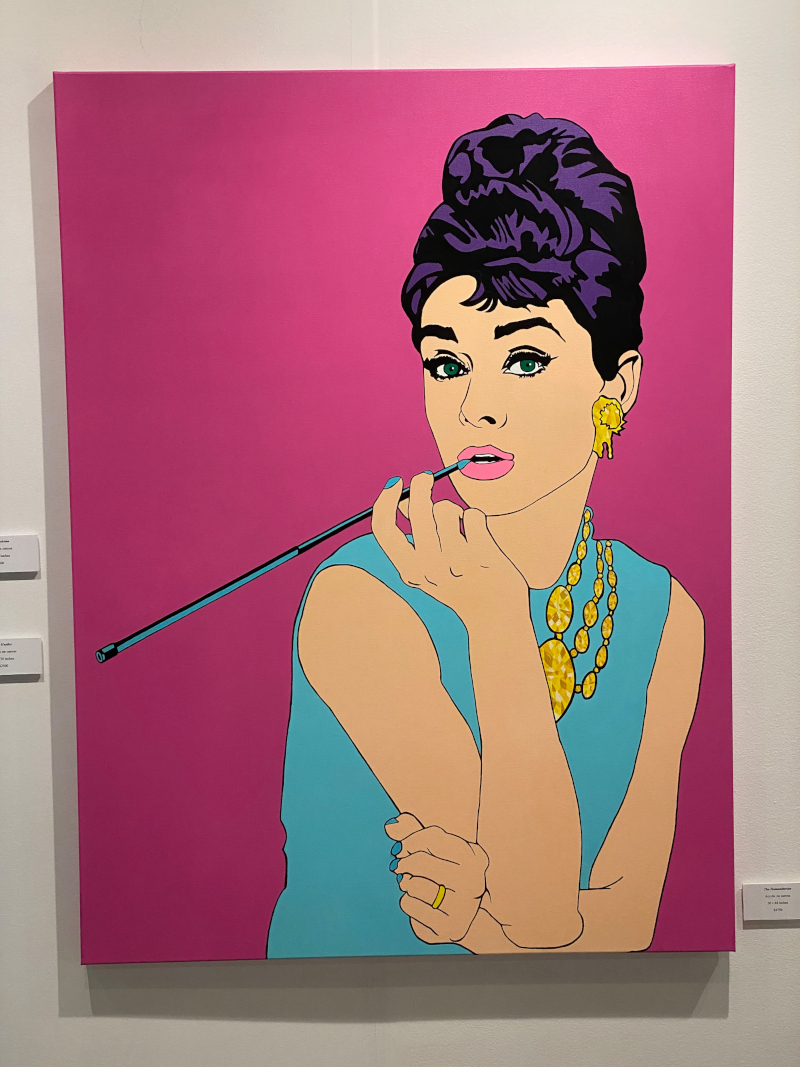
How much does your personal history influence your artistic style?
I think my personal history 100% influences my artistic style. Growing up, I always loved drawing faces and portraits. I focused on the eyes because I could immediately connect with that portrait. We often connect with others through eye contact and for me it was a way to connect with my own artwork. I grew up in Chicago and my family would often visit The Art Institute of Chicago. I fell in love with the artwork of Picasso, Warhol, and Lichtenstein. Their images are powerful, colorful, and mesmerizing. So, when I started “Gone 2 Soon,” I felt inclined to pay homage to my artistic heroes using my own inspired visual language.
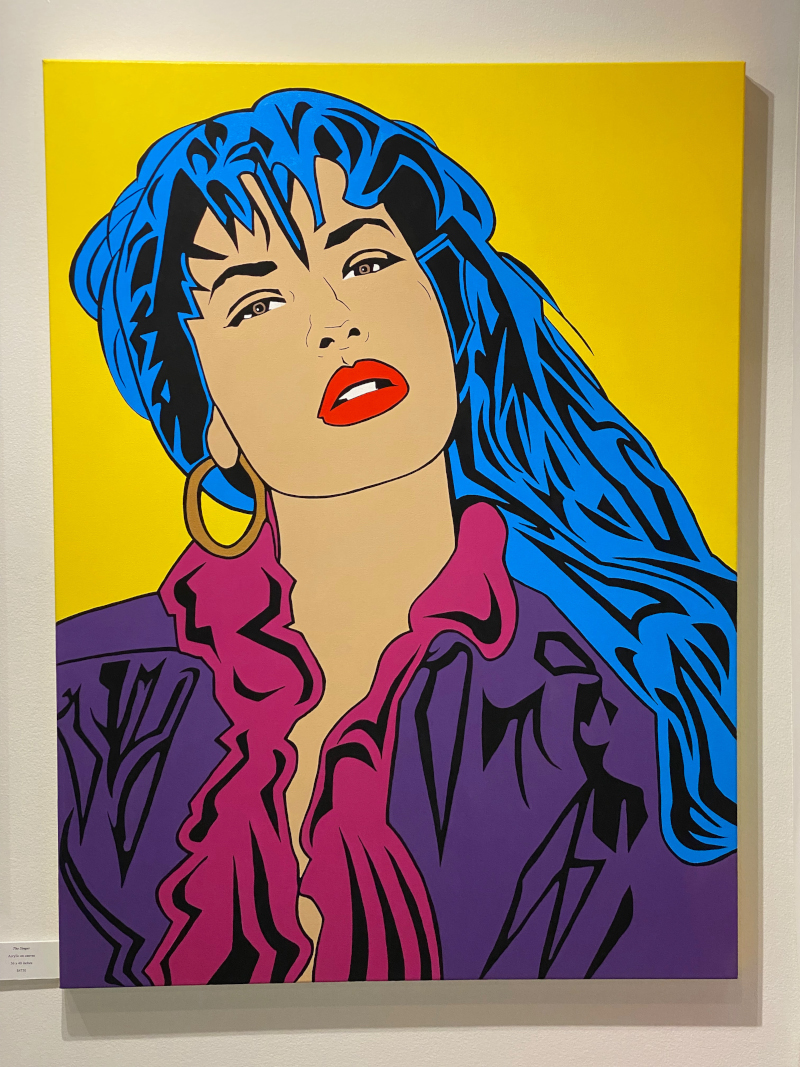
You currently use computer ink and acrylic paint to recreate a copy of the digital art on canvas. Have you been experiencing with different tools before you came up with this method?
At the beginning, I wasn’t even using photoshop or my computer. I was using my iPhone and an app called “Picsart”. The process was something akin to projecting an image on a canvas. I would take a picture of the canvas and lineup a photograph in the app. Then I would sketch an image onto the canvas, take another picture, line it up in the app and continue editing the canvas until I was satisfied with the result. It wasn’t until Kobe Bryant passed when I wanted to create a painting using Photoshop. Photoshop allowed me to take care of the creative portion ahead of time, so I could focus on the technical aspect of painting. And when I wanted to transfer the painting, I thought it would make sense to grid the artwork and crop each section to apply to the canvas, thereby eliminating any errors and wasted time going back to correct the pencil sketch on the canvas. I tend to think I am lazily-efficient. I work within the confines of what I have and make the best of it.
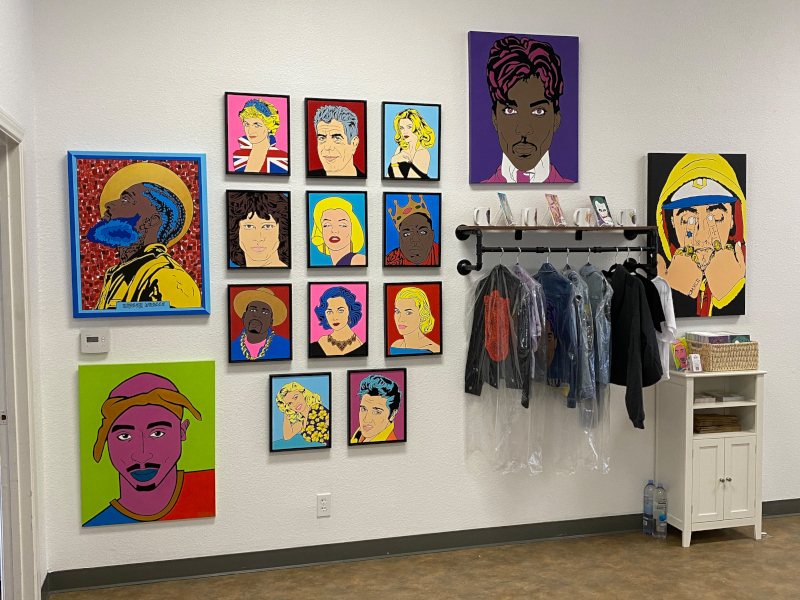
What is the primary message you would like to send with your art?
The primary message I want to send with my art is that it’s possible to transform grief, loss, and negativity into something meaningful. And no matter what we go through, it’s ok to feel all the feelings. And I think it’s important that people have perspective on their own life and the lives of their loved ones. Self-reflection was the biggest challenge during my period of grief. “Gone 2 Soon” provides an opportunity for reflection and understanding why we should appreciate people before they move on to the afterlife.
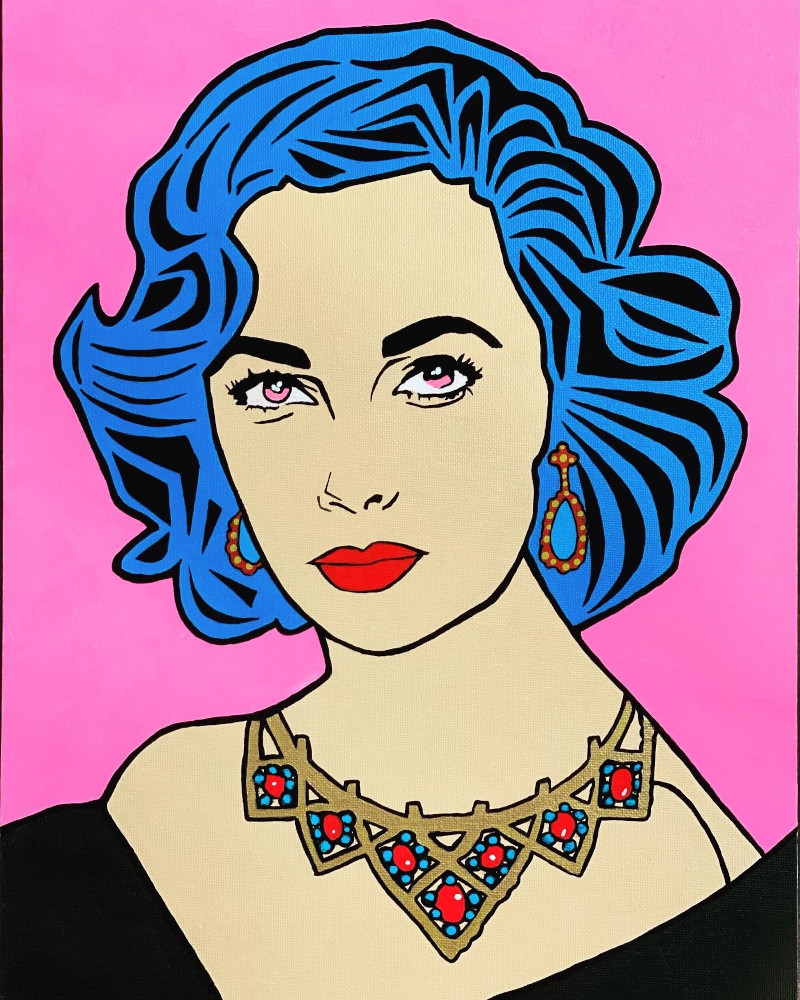
If you could create a mural anywhere in the world to celebrate the influence of art in history, which place would you choose, which motif would be your first choice, and what could we learn from it?
I would create a mural in Chicago, IL. It’s where I grew up. It’s where I fell in love with art. Chicago is one of the best cities in the world and the city’s appreciation of good art is incredible. All I want is to add to that history. I would love to create a motif that relates to the life and death cycle, but something that leaves people feeling good. I think it’s so important to understand our place in this universe, not just while we are alive. I learned a lot about the life and death cycle while I studied art history. Every culture has their story of life and death. What I found beautiful from those stories was that it isn’t just a start and stop process. It’s continual and never ends. We are all a part of that universal process. No matter what, that’s what makes us human.
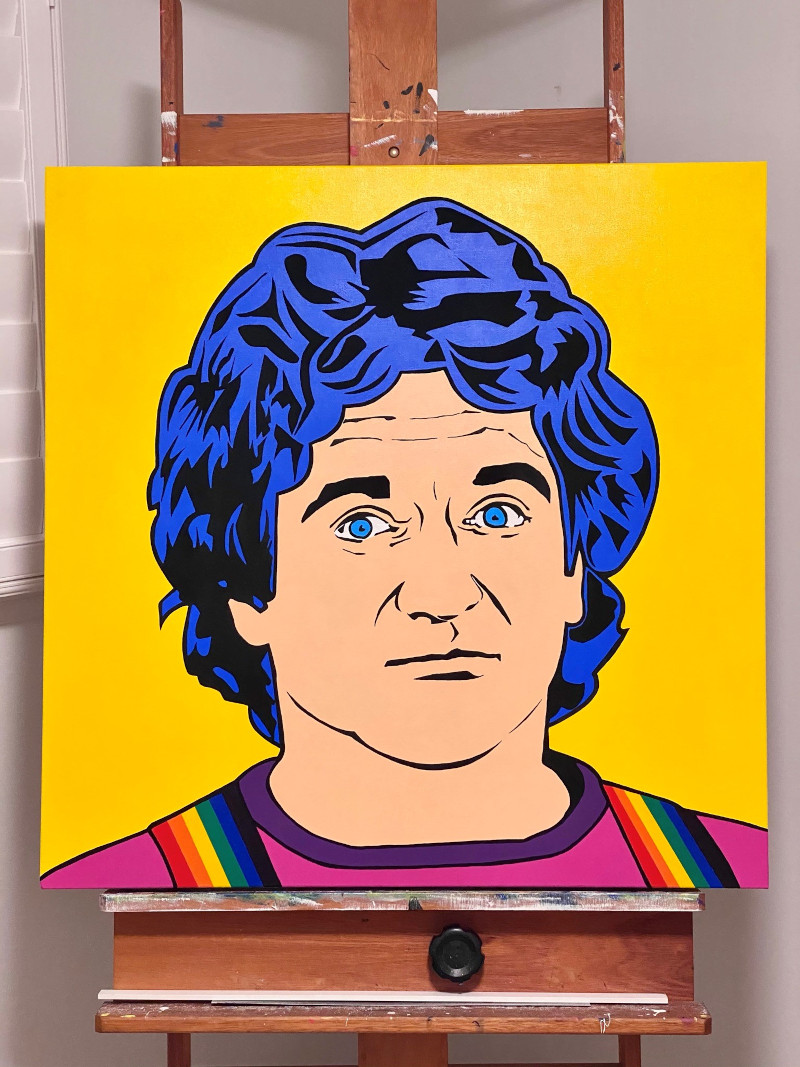
Which has been the best experience of exhibiting your art so far? Would you like to exhibit your work internationally again in the future?
I would definitely exhibit my work internationally again. The Other Art Fair by Saatchi Art was a wonderful opportunity for me to show my art to a wide range of people. Art fairs have become one of the best ways to promote artists and artwork to the masses without gallery representation. I realize there are artists who are promoted through galleries, but I think artists have more opportunities to make a living than just being represented by a gallery. Galleries typically carry a bullpen of artists, and if you’re lucky you get one exhibition a year. Social media and art fairs allow for more eyes on your art, and you don’t have to depend on one gallery to market your work. With that being said, I would still love to have commercial gallery representation, as it provides a certain caché. And it also allows for more opportunities to meet art collectors interested in my work.
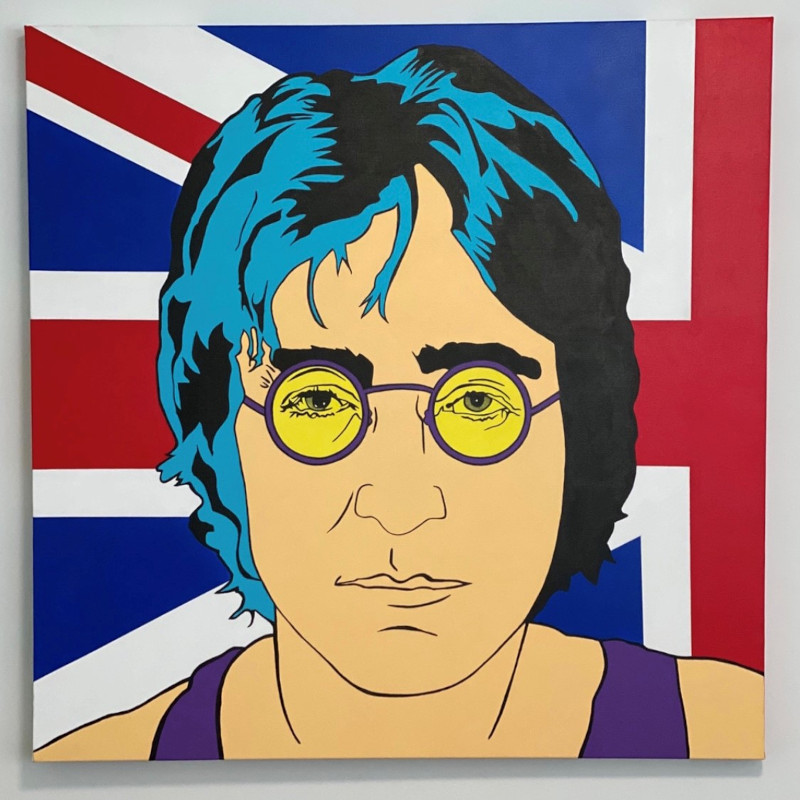
What is your ultimate dream? What would you like to achieve as an artist?
On one level, my ultimate dream is to have my artwork featured in every home and public venue. Whether it’s a portrait from “Gone 2 Soon” or if it’s something else that I create in the future, I want people to be inspired by my artwork. On a more human level, I want people to learn from my experiences through my artistic lens. I want others to understand that they are not alone in their pain and suffering. I have met so many people who connect with “Gone 2 Soon” because they connect with the pain from the series. Loss is universal. Pain is universal. I’ve learned through loss and pain we can better understand each other. And I hope others can learn that lesson, too.
|
|

